Accepted Scientific Name: Thelocactus bicolor subs. heterochromus (F.A.C.Weber) Mosco & Zanov.
Bradleya 18: 62 (2000)
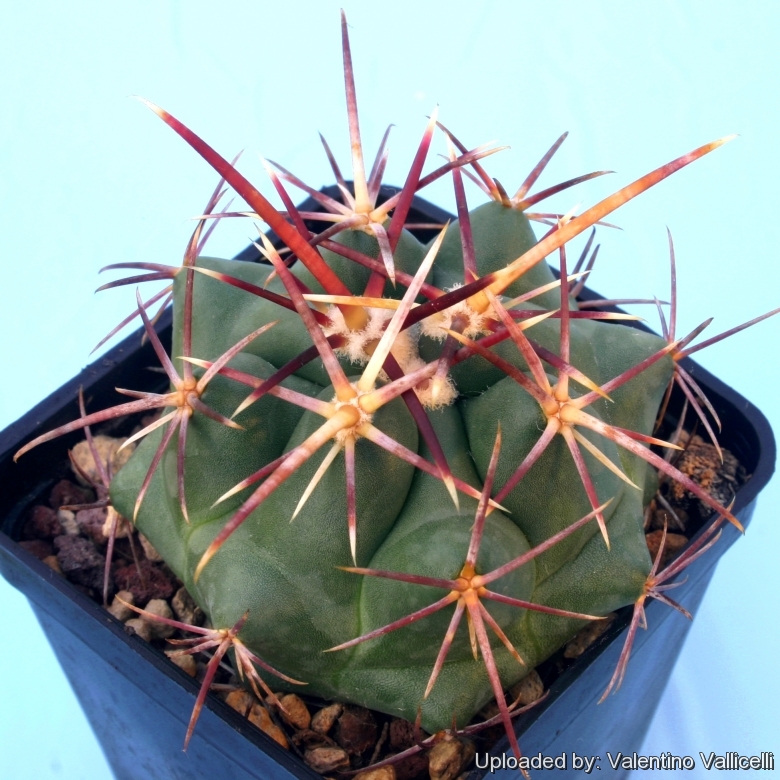
Echinocactus heterochromus (Thelocactus bicolor subs. heterochromus) Photo by: Valentino Vallicelli
Origin and Habitat: Northeastern Mexico (Durango, Coahuila)
Habitat: Grows in matorral xerofilo on limestone hills.
Synonyms:
See all synonyms of Thelocactus bicolor
Description: Thelocactus heterochromusSN|10830]]SN|15814]] is a robust-globular or somewhat squat cactus with very large rounded tubercles and areoles lacking nectar-secreting glands. This choice, slow-growing cactus is usually considered to be a subspecies of Thelocactus bicolorSN|3420]]SN|3420]]. But it looks more like a green form of Thelocactus hexaedrophorusSN|15814]]SN|10830]], with which it shares usually solitary stems with distinct, rounded tubercles armed with bold clusters of claw-like spines. The spines are a bit more slender in T. heterochromus, and, as the name implies, are often shaded different colours, from white to yellow, or red. The flowers are a gorgeous magenta, mostly 6—10 cm wide, usually with red at the base. Like many cactus forms of dry, hot region of Mexico it is strongly variable especially in spination. Therefore a precise description is impossible.
Derivation of specific name: heterochromus Greek 'heteros', different; and Greek 'chromos', colour; for the spines shaded in different colours.
Stem: Depressed to globose, usually solitary, 4-7 cm tall, 6-15 cm wide, somewhat green to bluish green (glaucous), or yellowish.
Ribs: 8 or 9(-11), very large rounded and obtuse, more or less distinctly tubercled.
Tubercles: Rounded.
Areoles: Without glands, large, closely set on old plants, densely felted when young, naked in age .
Spines: Spines variable as to number, shape, size, and colour.
Central spines: 1-4, straight, stout-subulate, more or less flattened, 20-40(-50) mm long, the lowermost down-pointed and sometimes grooved, the others curving towards stem apex, ochre to reddish often white, but sometimes banded with red.
Radial spines: 6-9(-10), straight, acicular to subulate, usually terete, straight or incurved, 16-28(-40) mm long, ochre to reddish, more or less banded with red and white or pale yellow, otherwise like the centrals.
Flowers: Like those but up to100 mm wide, Deep pink- magenta with a orange-red throat, base orange. Scales on ovary and flower-tube ovate, greenish; margins thin and ciliate. Inner perianth-segments light purple, darker at base, oblong. Stigma-lobes yellow.
Fruit: Globose, small, 1.5 cm. in diameter.
Seeds: 1.6-2.2 x 1-1.5 mm, tubercuate, black, truncate at base, ridged on back; hilum basal, white, circular.
Blooming season: Flowers appear in mid-summer (in habitat from June through August).
Subspecies, varieties, forms and cultivars of plants belonging to the Thelocactus bicolor group
 Thelocactus bicolor (Galeotti ex Pfeiff.) Britton & Rose: (subsp. bicolor) has extremely variable spination, 1-4 central spines, 8-15 radials, and usually bicolored flowers; Distribution: Chihuahuan Desert of Texas and Mexico and in the Tamaulipan thorn shrub vegetation along the Rio Grande.
Thelocactus bicolor (Galeotti ex Pfeiff.) Britton & Rose: (subsp. bicolor) has extremely variable spination, 1-4 central spines, 8-15 radials, and usually bicolored flowers; Distribution: Chihuahuan Desert of Texas and Mexico and in the Tamaulipan thorn shrub vegetation along the Rio Grande. Thelocactus bicolor subs. bolaensis (C.Runge) Doweld: has dense, strong, and white spination. Distribution: Sierra Bola in Coahuila
Thelocactus bicolor subs. bolaensis (C.Runge) Doweld: has dense, strong, and white spination. Distribution: Sierra Bola in Coahuila Thelocactus bicolor var. commodus R.Haas: It has been described as having only one central spine, but there are 2 upper central spines so appressed to the stem that they can be easily mistaken for radials. Therefore it has three central spines and its maintenance at variety rank is not justified. Distribution: near Montemorelos, Tamaulipas, outside the limits of the Chihuahuan Desert.
Thelocactus bicolor var. commodus R.Haas: It has been described as having only one central spine, but there are 2 upper central spines so appressed to the stem that they can be easily mistaken for radials. Therefore it has three central spines and its maintenance at variety rank is not justified. Distribution: near Montemorelos, Tamaulipas, outside the limits of the Chihuahuan Desert. Thelocactus bicolor subs. flavidispinus (Backeb.) N.P.Taylor: has spines covering the entire plant, 3 central spines, 12-17 radials, and (usually) bicolored flowers; Distribution: Chihuahuan Desert vegetation in Texas and, possibly, neighboring Mexico.
Thelocactus bicolor subs. flavidispinus (Backeb.) N.P.Taylor: has spines covering the entire plant, 3 central spines, 12-17 radials, and (usually) bicolored flowers; Distribution: Chihuahuan Desert vegetation in Texas and, possibly, neighboring Mexico. Thelocactus bicolor subs. heterochromus (F.A.C.Weber) Mosco & Zanov.: has stems with wider ribs and stouter, subulate, spines banded in red. Distribution: Coahuila and Durango (This is the westernmost taxon in the genus)
Thelocactus bicolor subs. heterochromus (F.A.C.Weber) Mosco & Zanov.: has stems with wider ribs and stouter, subulate, spines banded in red. Distribution: Coahuila and Durango (This is the westernmost taxon in the genus) Thelocactus bicolor var. pottsii (Schur ex Salm-Dyck) Backeb.: intermediate plants between heterochromus and bicolor, but definitely belong to heterochromus for their lack of areolar glands. Distribution: Chihuahua
Thelocactus bicolor var. pottsii (Schur ex Salm-Dyck) Backeb.: intermediate plants between heterochromus and bicolor, but definitely belong to heterochromus for their lack of areolar glands. Distribution: Chihuahua Thelocactus bicolor var. schottii (Engelm.) Krainz in Krainz: It is characterized by a very long, papery upper spine. Distribution: Big Bend area
Thelocactus bicolor var. schottii (Engelm.) Krainz in Krainz: It is characterized by a very long, papery upper spine. Distribution: Big Bend area Thelocactus bicolor subs. schwarzii (Backeb.) N.P.Taylor: has no central spines (may however appear sporadically), 13-14 radials, and tricolored flowers. Distribution: Tamaulipas east of the Sierra Madre Oriental.
Thelocactus bicolor subs. schwarzii (Backeb.) N.P.Taylor: has no central spines (may however appear sporadically), 13-14 radials, and tricolored flowers. Distribution: Tamaulipas east of the Sierra Madre Oriental.- Thelocactus bicolor subs. swobodae Halda & Horáček
 Thelocactus bicolor var. texensis Backeb.: Texensis is an invalid name published by Backeberg applying to a Texas form.
Thelocactus bicolor var. texensis Backeb.: Texensis is an invalid name published by Backeberg applying to a Texas form. Thelocactus bicolor var. tricolor (K.Schum.) F.M.Knuth in Backeb. & F.M.Knuth: it is a form with bright red spines. Distribution: Saltillo, Coahuila.
Thelocactus bicolor var. tricolor (K.Schum.) F.M.Knuth in Backeb. & F.M.Knuth: it is a form with bright red spines. Distribution: Saltillo, Coahuila. Thelocactus bicolor var. wagnerianus (A.Berger) Krainz in Krainz: it is differentiated from Thelocactus bolaensis for its columnar stem, the reddish spines and the lack of flattened spines. Distribution: west of Saltillo, Coahuila
Thelocactus bicolor var. wagnerianus (A.Berger) Krainz in Krainz: it is differentiated from Thelocactus bolaensis for its columnar stem, the reddish spines and the lack of flattened spines. Distribution: west of Saltillo, Coahuila- Thelocactus bicolor subs. zwakii Chvastek & Halda: it has smaller stem and flowers . It is not sufficiently distinct to deserve a subspecies rank. Distribution: Castanos in Coahuila.
 Thelocactus bicolor cv. albiflorus: white flowering form. Garden origin.
Thelocactus bicolor cv. albiflorus: white flowering form. Garden origin. Thelocactus bicolor cv. inermis: Spineless cultivar with flamboyant jagged flowers.
Thelocactus bicolor cv. inermis: Spineless cultivar with flamboyant jagged flowers. Thelocactus heterochromus longispinus
Thelocactus heterochromus longispinus
Notes: This is the westernmost taxon in the genus. Usually, it has a depressed to globose stem with wider ribs. Spines are stouter, subulate, banded in red. The var. pottsii applies to those entities from Chihuahua that are intermediate between "heterochromus" and "bicolor", but definitely belong to heterochromus for their lack of areolar glands.
Bibliography: Major references and further lectures
1) Nathaniel Lord Britton, Joseph Nelson Rose “Cactaceae: Descriptions and Illustrations of Plants of the Cactus Family” volume 4, 1923
2) Hirao, “Colour encyclopaedia of cacti”, f. 118 (1979)
3) Hecht, “BLV Handbuch der Kakteen”, 363 (1982)
4) David R Hunt; Nigel P Taylor; Graham Charles; International Cactaceae Systematics Group. "The New Cactus Lexicon" dh books, 2006
5) James Cullen, Sabina G. Knees, H. Suzanne Cubey "The European Garden Flora Flowering Plants: A Manual for the Identification of Plants Cultivated in Europe, Both Out-of-Doors and Under Glass" Cambridge University Press, 11/Aug/2011
6) Thelocactus heterochromus in: Cactus and Succulent Journal, Volume 81,
2009
7) Urs Eggli, Leonard E. Newton “Etymological Dictionary of Succulent Plant Names”
Springer Science & Business Media, 29 June 2013
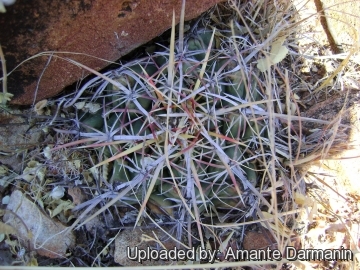 Thelocactus heterochromus, Rio Nazas, Durango (Thelocactus bicolor subs. heterochromus) Photo by: Amante Darmanin
Thelocactus heterochromus, Rio Nazas, Durango (Thelocactus bicolor subs. heterochromus) Photo by: Amante Darmanin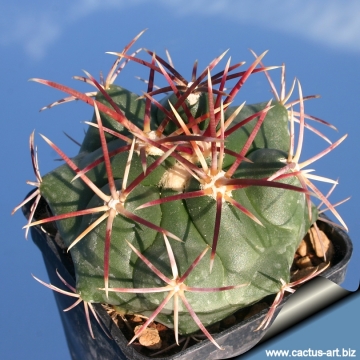 Echinocactus heterochromus (Thelocactus bicolor subs. heterochromus) Photo by: Cactus Art
Echinocactus heterochromus (Thelocactus bicolor subs. heterochromus) Photo by: Cactus Art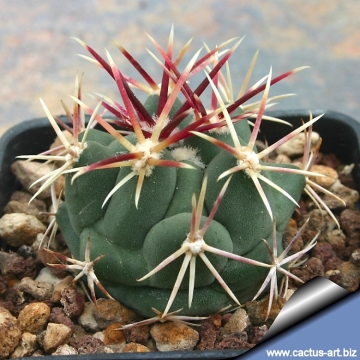 Echinocactus heterochromus (Thelocactus bicolor subs. heterochromus) Photo by: Cactus Art
Echinocactus heterochromus (Thelocactus bicolor subs. heterochromus) Photo by: Cactus Art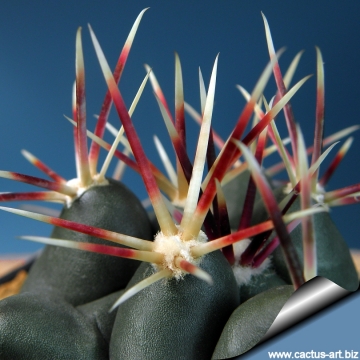 Echinocactus heterochromus (Thelocactus bicolor subs. heterochromus) Photo by: Cactus Art
Echinocactus heterochromus (Thelocactus bicolor subs. heterochromus) Photo by: Cactus Art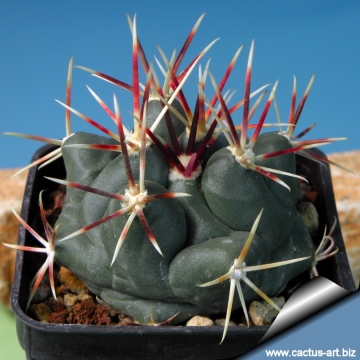 Echinocactus heterochromus (Thelocactus bicolor subs. heterochromus) Photo by: Cactus Art
Echinocactus heterochromus (Thelocactus bicolor subs. heterochromus) Photo by: Cactus Art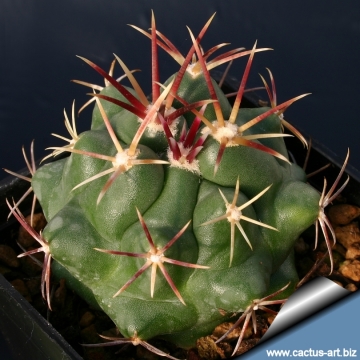 Echinocactus heterochromus (Thelocactus bicolor subs. heterochromus) Photo by: Cactus Art
Echinocactus heterochromus (Thelocactus bicolor subs. heterochromus) Photo by: Cactus Art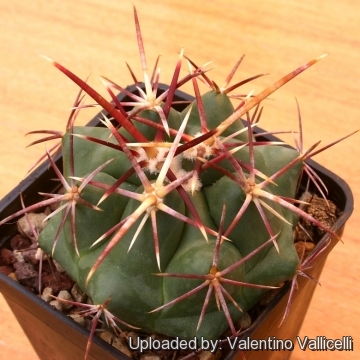 Echinocactus heterochromus (Thelocactus bicolor subs. heterochromus) Photo by: Valentino Vallicelli
Echinocactus heterochromus (Thelocactus bicolor subs. heterochromus) Photo by: Valentino Vallicelli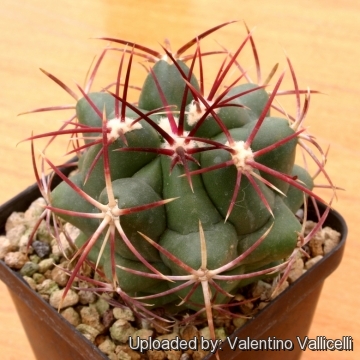 Las Minas Navidad, durango, Mexico. (Thelocactus bicolor subs. heterochromus) Photo by: Valentino Vallicelli
Las Minas Navidad, durango, Mexico. (Thelocactus bicolor subs. heterochromus) Photo by: Valentino VallicelliCultivation and Propagation: This is a summer grower species easy to cultivate, more cold tolerant than most and less fussy regarding soil conditions.
Growth rate: It is a relatively rapidly growing and easily flowering species that will make clumps given the best conditions.
Soils: It likes very porous standard cactus mix soil, but can become too elongated if compost is too rich.
Repotting: Use pot with good drainage.
Watering: Water regularly from Spring to Autumn, but do not overwater(Rot prone), keep dry in winter.
Fertilization: Feed with a high potassium fertilizer in summer.
Hardiness: Reputedly somewhat resistant to frost if kept on the dry side prior to, and during, cold weather (hardy to -7 C ° C, or less for short periods).
Exposition: Requires full sun or light shade and careful watering to keep plant compact with strong coloured spines. Tends to bronze in strong light, which encourages flowering and heavy spine production.
Uses: It is an excellent plant for container growing. It always looks good and stays small. It look fine in a cold greenhouse and frame or outdoor in a rockery.
Pests & diseases: It may be attractive to a variety of insects, but plants in good condition should be nearly pest-free, particularly if they are grown in a mineral potting-mix, with good exposure and ventilation. Nonetheless, there are several pests to watch for:
- Red spiders: Red sopiders may be effectively rubbed up by watering the infested plants from above.
- Mealy bugs: Mealy bugs occasionally develop aerial into the new growth among the wool with disfiguring results, but the worst types develop underground on the roots and are invisible except by their effects.
- Sciara Flies: Sciara flies are one of the major problems for seedlings. It is a good practice to mulch your seedlings with a layer of grit, which will strongly discourage the flies.
- Scales: Scales are rarely a problem.
It is wise to treat your whole collection with a systemic insecticide twice a year in spring and autumn.
- Rot: Rot is only a minor problem with cacti if the plants are watered and “aired” correctly. If they are not, fungicides won't help all that much.
Propagation: From seed, since the plant rarely produces plantlets. Seeds germinate in 7-14 days at 21-27° C in spring, remove gradually the glass cover as soon the plants will be well rooted (ca 1-2 weeks) and keep ventilated, no full sun for young plants!


















